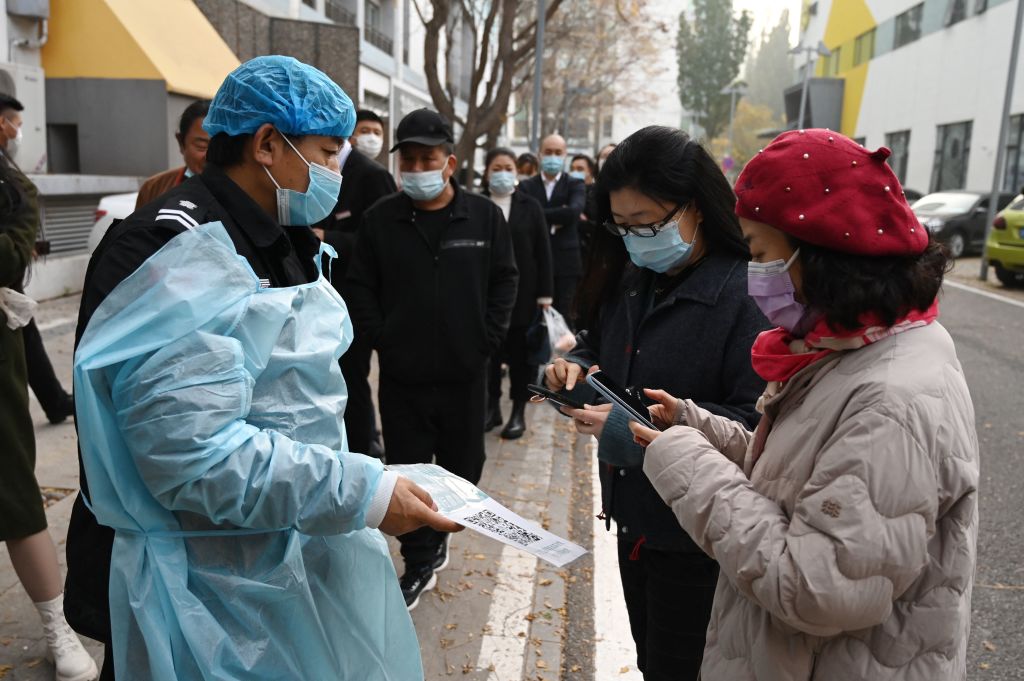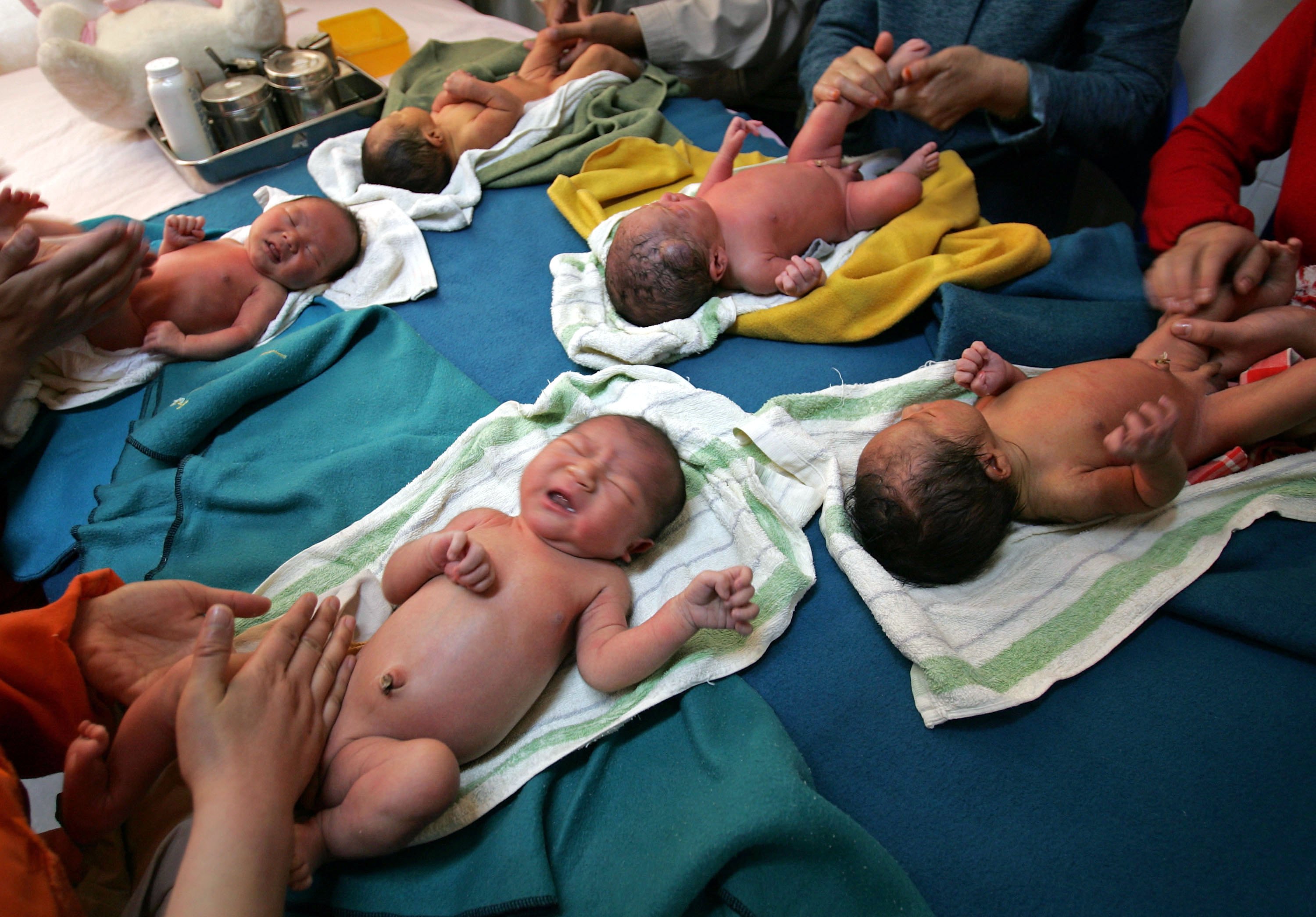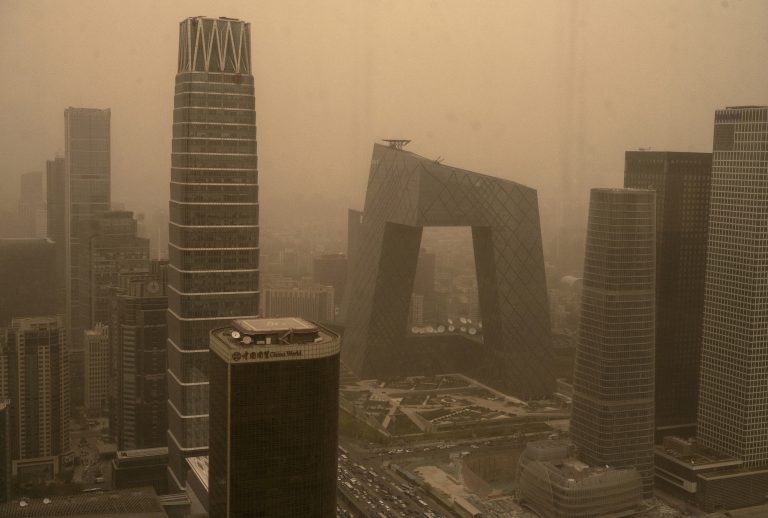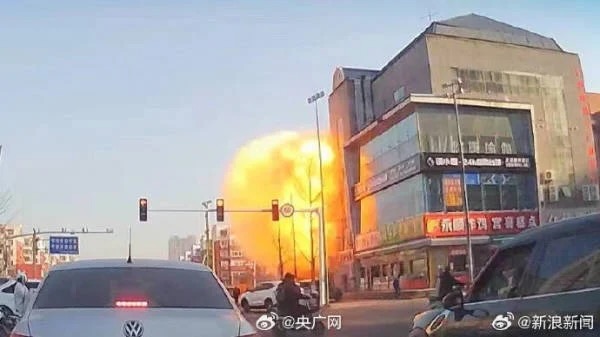News analysis
In 2021, China’s economy finds itself in chaos. According to its National Bureau of Statistics, China’s GDP grew by 18.3 percent in the first quarter, 7.9 percent in the second quarter, and fell sharply by 4.9 percent in the third quarter. Some analysts have predicted it to continue dropping below 4, or even 3 percent in the fourth quarter.
While some say China’s economic woes can be attributed to external factors such as commodity price hikes and international shipping tensions, experts say the policies of the Chinese Communist Party (CCP) are the main drivers. The CCP’s response has been to clamp down on state-run media, forbidding them from “criticizing China’s economy” or to reprint foreign reports and commentaries “without discretion.”
This article outlines the seven major policies of the CCP that have devastated China’s economy.
1. ‘Zero Tolerance’ COVID-19 policy
As the pandemic continues to ravage communities in its second year, people around the world have tried to resume some sense of normalcy while co-existing with the virus. The CCP however, continues to enforce a strict “zero tolerance” COVID-19 policy, resulting in the locking down of communities every time a single confirmed case is found and enforcing mass nuclei testing.
Success
You are now signed up for our newsletter
Success
Check your email to complete sign up
In the city of Ruili, one toddler has been tested more than 70 times, which shows the absurdity of the “zero tolerance” policy. Chinese leader Xi Jinping also hasn’t traveled abroad or received foreign guests for more than 20 months.
The CCP has defended its COVID-19 protocol, with deputy director for the National Health Commissions’ Disease Control Bureau, Wu Liangyou, saying it “demonstrates the strength of a system based on the people’s will.”
READ MORE: Beijing Shuts Down Whole Districts as Fresh Outbreak Spread Through Capital

The outbreak has been reoccurring in China across several provinces. The “zero tolerance” policy however, has severely damaged the economy. Ruili city in southwest China, which is home to a population of 210,000 people, has experienced three city-wide lockdowns in the last six months, resulting in the near collapse of the town’s economy.
The Yantian port, Asia’s busiest port for container ships, is another example. After a single case of infection was discovered, local authorities tightened prevention and control measures, causing a sharp decline in port capacity and a spike in freight rates, severely disrupting the global supply chain.
2. Biased ‘anti-monopoly’ laws
In late 2020, Beijing began cracking down on the country’s private and tech sectors under the slogan of “strengthening anti-monopoly and preventing disorderly expansion of capital.” On Nov. 18, the National Anti-Monopoly Bureau was officially inaugurated. Legislation was also revised for the first time in 13 years to include anti-monopoly laws.
Several penalties by the country’s regulators have resulted in severe loss of profit for tech giants Alibaba, Tencent and Baidu after being fined billions of yuan for violating Anti-Monopoly laws. Online platform giant DiDi was also forced to delist from the U.S. stock exchange after a joint investigation by seven departments resulted in its removal from app stores.
According to a report published by investment bank Goldman Sachs on July 29, since last November, CCP regulators have enacted at least 50 actions targeting sectors of antitrust, finance, data security, and social equality. These regulation penalties have resulted in the shares of six leading tech companies, including Alibaba and Tencent, experiencing a loss of over US$1.1 trillion, over 40 percent of their total revenue.
3. Demographic decline
China conducts a national census every 10 years. The seventh census was scheduled to be released in early April, but it was postponed to May 11. Some demographers have described the 2020 census as “the worst census in terms of quality.”
When analyzing this year’s census data, China’s demographics are currently in severe crisis. The crisis can be attributed to two factors: a rapidly declining birth rate and the growing elderly population. China’s birth rate dropped from 21.06 per 1,000 people in 1990 to 12.07 in 2015 and to only 10.48 per every 1,000 in 2019. The birth rate has been declining continuously since 2016.
RELATED: China Is Ending Its Population Controls, But Many No Longer Want to Have Children

Secondly, the sharp increase in China’s aging population continues to rise. In 2020, 18.7 percent of its population was aged 60 and above and 13.5 percent was aged 65 and above, an increase of 5.44 and 4.63 percent, respectively.
These two trends have already significantly impacted the Chinese economy. Based on the demographic changes, demographer Yi Fuxian has projected that China’s economic growth rate will continue to decelerate, most likely falling below 4.7 percent after 2025. This means the CCP’s goal of doubling the total economic volume in 2035, which requires an average economic growth rate of 4.7 percent, will be difficult, if not impossible to achieve.
As an attempt to try and tackle its population crisis, on June 26, the CCP adopted the Decision to Optimize Fertility Policy and Promote Long-term Balanced Population Development. The policy allows families to have three children and abolishes restrictive measures and penalties on new births.
4. Draconian data control policies resulting in a ‘digital Berlin Wall’
On Dec. 3, 155 days after listing on the U.S. stock market, tech giant Didi announced that it would be delisting from the New York Stock Exchange and transferring to Hong Kong instead. DiDi also experienced a halt in new user registration, resulting in a security audit and removal of its app and from regulators.
Didi is just one of the victims of the CCP’s draconian data control policy. With the introduction of the Data Security Law (effective Sept. 1) and the Personal Information Protection Law (effective Nov. 1) in 2021, the CCP claims to have constructed a legal framework for China’s information and data security.
The Chinese government considers data as the equivalent of oil of the 21st century, an indispensable resource for driving artificial intelligence algorithms, economic strength, and national power. The CCP therefore regards data and the digital economy as a major opportunity to “overtake” the U.S. Chinese regulators have aimed to create a “data Berlin Wall” in protecting its intellectual property.
The CCP has also succeeded in forcing Tesla, Apple, and other Western companies to build dedicated Chinese data centers. Reuters reported on Nov. 16 that after China introduced a new data law, some Chinese ships became untrackable, severely disrupting the global supply chain.
READ MORE: 85% of Chinese Ships ‘Disappear’, AIS Base Stations Seized Along China’s Coast
The move prompted countermeasures from the U.S. and other countries. In June, an executive order issued by the Biden administration introduced a new regulatory process to restrict the flow of data across borders on national security grounds. An alliance was formed where other countries agreed to share data while restricting the flow of data to China.
5. Power shortages due to systemic problems
Since September, power shortages have affected more than 20 provinces and cities in China. Even Beijing had to cancel its annual “light show” during the week of National Day, a public holiday celebrating the formal proclamation of the People’s Republic of China (PRC.) The power shortages have disrupted China’s economy and accelerated the pullout of foreign investment, including Yahoo and networking-platform LinkedIn.
The CCP’s policy of “double control of energy consumption” includes two elements: “energy consumption per unit of GDP” and “total energy consumption.” Although the policy has been implemented for many years, it hasn’t impacted this year in terms of carbon peaks and neutrality.

However, since 2020, because of the pandemic, some provinces and municipalities took a chance and were loose in implementing the energy policy. On Sept. 16, the National Development and Reform Commission announced another program to improve the intensity and total production of energy. Under pressure, local governments engaged in campaign-style emissions reduction and forcefully restricted electricity consumption.
The shortages highlight a structural problem in power supply and institutional management across China. The structural problem refers to the phenomenon of “electricity surplus throughout the year but a shortage in peak times.” The communist-styled policy is used to reverse the price of coal and electricity. The price of coal is based on market prices, but coal plants are controlled by the government, resulting in a phenomenon where the more energy coal plants generate, the more money they lose.
6. Exploitive reforms resulting in panic across the real estate market
In 1998, when the real estate reform was launched, the CCP promised that more than 80 percent of urban families would be provided with affordable housing. It claimed that lowest-income earners would be provided with low-cost housing, while high-income earners would be offered luxury commercial housing.
However, in 2003, China’s real estate market took a different turn. The CCP positioned the real estate industry as one of the pillar forces in driving national economic development. The “main body of housing supply” switched from affordable housing to commercial housing. This has resulted in an absurd situation where 90 percent of China’s urban housing is luxury real estate, which most people cannot afford.

“In developed countries, the proportion of commercial housing in the whole housing supply system is generally no more than 25 percent, and the proportion of subsidized housing or housing with subsidized features is often very high,” Cao Jianhai, a professor at the Graduate School of Chinese Academy and Social Sciences said.
On one hand, the price of commercial housing has been rising exponentially, and on the other hand, the construction of affordable housing has been marginalized and cut. Not only have Chinese people struggled to pay their mortgages in the era of “high housing prices,” but the housing market has also created an unprecedented bubble, impacting the economy in four ways:
- Economic growth (about 1/4 of GDP growth rate)
- Local finance (about 1/3 of broad local revenue)
- Bank credit (about 40 percent)
- Residents’ wealth (more than 70 percent)
The housing bubble has posed a sizable threat to the nation’s economy. Since 2020, new regulations have been introduced such as the tightening of loans for home purchases, making it increasingly more challenging for real estate companies to survive. The most prominent case is the collapse of real estate giant Evergrande Group.
The CCP’s quest for: “stable land, housing and expectations” is becoming increasingly out of reach.
7. The specter of ‘common prosperity’
One of the most far-reaching CCP policies is the concept of “common prosperity” advocated by Chinese leader Xi Jinping on Aug. 17. The policy suggests an institutional arrangement that coordinates the distribution of wealth equally amongst the wealthy and poor.
The world is familiar with primary distribution, which refers to income obtained by market production and redistribution regulated through government taxes. However, the “third distribution” proposed by the CCP is one of a kind in the world and refers to the distribution of social resources, charity and public welfare from high-income earners voluntarily.
After Beijing launched the “common prosperity” campaign, tech giants have begun donating millions of dollars and competing to outshine each other in charity work. Tencent was the first to announce a total donation of 100 billion yuan, followed by Pinduoduo’s 10 billion yuan. China’s largest e-commerce firm Alibaba launched the “Ten Actions to Promote Shared Prosperity” on Sept. 2, vowing to donate 100 billion yuan by 2025.
All these examples suggest that “common prosperity” isn’t just a policy or propaganda slogan, but a scheme created by the CCP to fundamentally restructure the economy as it sinks into recession.
Alina Wang contributed to this report.














